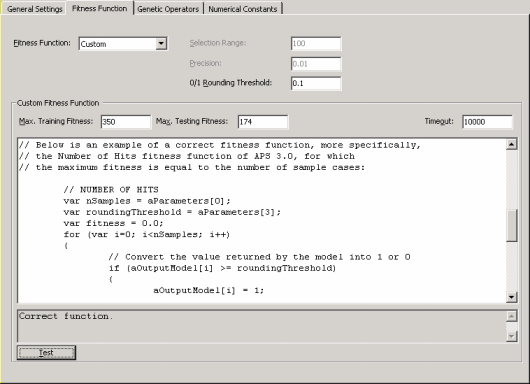The learning algorithm
APS 3.0 uses for classification, classifies your input data into two classes: class "0" and class "1". Obviously, the dependent variable in your training and testing sets
can only have two distinct values: 0 or 1.
APS 3.0 classifies the value returned by the evolved model as
"1" or "0" using the 0/1 Rounding Threshold. If the value returned by the evolved model is equal to or greater than the rounding threshold, then the record is classified as
"1", "0" otherwise.
Classification problems with more than two classes are also easily solved with APS 3.0. When you are classifying data into more than two classes, say,
n distinct classes, you must decompose your problem into n separate 0/1 classification tasks as follows:
C1 versus Not C1
C2 versus Not C2
...
Cn versus Not Cn
Then evolve n different models separately and combine the different models to make the final
classification model.
For Classification problems, you have access to 10 built-in fitness
functions: one based on the number of hits, two others based on well-known indicators borrowed from medicine
(sensitivity, specificity,
positive predictive value, and
negative predictive value),
and seven others based on well-known statistical indexes (R-square,
mean squared error, root mean squared
error, mean absolute
error, relative squared
error, root relative squared
error, and relative absolute error). Additionally, you can also design your
own fitness function and explore the solution space with it. In all cases, though, you must always take into consideration the 0/1 rounding
threshold.

You can design your own fitness function
using the Custom Fitness Function window to write the code of your fitness function. The code for the custom fitness function must be in JavaScript and can be tested before evolving a model with it.
The 10 built-in fitness functions of APS 3.0 for Classification are based on the:
The kind of fitness function you choose will depend most probably on the
indicator you are most familiar with. And although there is nothing wrong with this for all of them can accomplish an efficient evolution, you might want to try different fitness functions for they travel the fitness landscape differently: some of them very straightforwardly in their pursuits while others choose less obvious paths.
|
